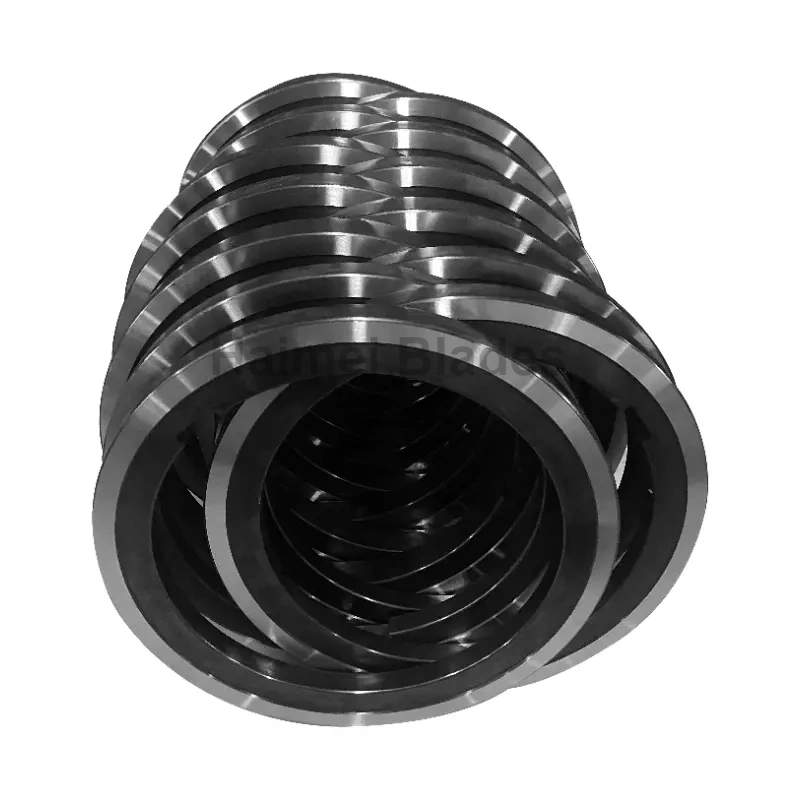Slitting spacers play a crucial role in metal processing operations, ensuring precise and efficient slitting of metal coils. Selecting the appropriate slitting spacers is essential for achieving high-quality results and maximizing productivity. In this article, we will explore the key factors that should be considered when choosing slitting spacers for a specific metal processing operation. By understanding these factors and making informed decisions, manufacturers can enhance their slitting processes, minimize downtime, and optimize overall operational efficiency.

1. Material Compatibility:
The first and foremost consideration when selecting slitting spacers is their compatibility with the metal being processed. Different metals have varying hardness, thickness, and surface characteristics, which can affect the performance and longevity of the spacers. Ensure that the chosen spacers are specifically designed for the type of metal being slit to ensure optimal performance and minimize the risk of damage to both the spacers and the metal coils.
2. Spacer Design and Construction:
The design and construction of slitting spacers significantly impact their performance and durability. Consider the following aspects:
Spacer Thickness: The thickness of the spacer should be appropriate for the desired slit width and the thickness of the metal being processed. A spacer that is too thin may result in blade deflection and poor slit quality, while a spacer that is too thick can cause excessive blade wear and increased cutting forces.
Spacer Material: Slitting spacers are typically made from materials such as tool steel, carbide, or ceramic. Each material has its own advantages and limitations in terms of hardness, wear resistance, and cost. Select a spacer material that strikes the right balance between performance and cost-effectiveness for your specific application.
Surface Finish: The surface finish of the spacers can affect the friction between the spacers and the metal coils. A smooth surface finish can reduce friction and minimize the risk of scratching or damaging the metal surface during the slitting process.
3. Blade Compatibility:
Slitting spacers and blades work in tandem to achieve precise and clean slits. It is crucial to ensure that the selected spacers are compatible with the blades being used. Consider factors such as blade thickness, blade material, and blade configuration to ensure proper alignment and optimal performance. Compatibility between the spacers and blades is essential for achieving consistent slit quality and prolonging the lifespan of both components.
4. Operational Considerations:
Several operational factors should be taken into account when selecting slitting spacers:
Production Speed: The speed at which the metal processing operation runs can impact the performance and durability of the spacers. Choose spacers that can withstand the production speed without compromising on slit quality or causing excessive wear.
Maintenance and Replacement: Consider the ease of maintenance and replacement when selecting slitting spacers. Spacers that are easy to install, remove, and replace can minimize downtime and improve overall operational efficiency.
Budget: While it is important to prioritize quality and performance, it is also essential to consider the budgetary constraints of the metal processing operation. Evaluate the cost-effectiveness of different slitting spacer options and choose the one that offers the best balance between performance and affordability.
Conclusion:
Selecting the right slitting spacers is a critical decision that can significantly impact the success of a metal processing operation. By considering factors such as material compatibility, spacer design and construction, blade compatibility, and operational considerations, manufacturers can make informed choices that optimize slit quality, increase productivity, and reduce downtime. Investing time and effort in selecting the most suitable slitting spacers will ultimately lead to improved efficiency, enhanced product quality, and a competitive edge in the metal processing industry.
